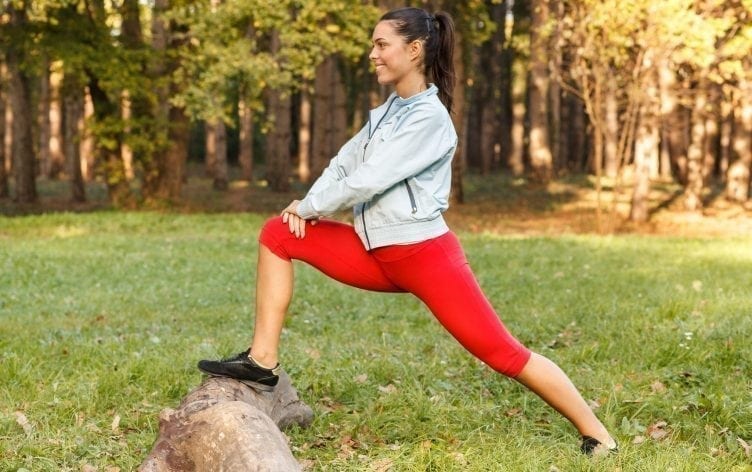
Most runners have as many injury stories as they do training shoes in their closets. In fact, it may seem as though you can’t truly call yourself a runner unless you have an orthopedic surgeon or a physical therapist on speed dial. The sport’s simplicity— its repetitive and weight-bearing nature—also accounts for its tendency to damage the body.
The bad news about these injuries is that they are often hard to avoid. The good news? They’re totally treatable. Here, we break down the most common running ailments—and how to avoid them.
Note: As with any health issue, it’s important you speak with your doctor for a proper diagnosis and treatment plan. What follows is general advice that may or may not apply to your specific ailment.
Shin Splints
- The definition: An aching pain in the front of the lower leg.
- The causes: Usually, shin splints are brought on by an increase in mileage. A change of running surface or speed—especially over-striding—can also strain the lower leg tendons.
- The symptoms: Tight calf muscles and tender shin bones that tend to flare up post-run.
- The treatment: Ice, ice baby: Grab a bag of frozen peas and place it on the irritated spot a few times a day to reduce inflammation. Calf and Achilles stretches will also help to loosen up the lower leg muscles and reduce the strain on your shins. You may need to stop running altogether for a week or two if the pain is severe.
- Avoid it: New to running? Don’t overdo it. Gently increase your mileage by just 10 percent every week, and stick to softer surfaces, like grass or a bouncy track, which are more forgiving than rock-hard pavement.
Plantar Fasciitis
- The definition: Inflammation of the plantar fascia, the thick tissue covering the bones on the bottom of the foot.
- The causes: Trauma (stepping on a sharp object or otherwise straining your foot), overuse, inflexible calf muscles, over-pronation (your foot rolls inward when you run), high arches and incorrect shoes.
- The symptoms: Pain at the base of the heel, which is more intense when you’re barefoot. Pain is often most severe in the mornings or at the start of a run.
- The treatment: Ice, physical therapy and the addition of orthotics—supportive shoe inserts that an orthopedist can help you select. Rolling the afflicted foot over a tennis ball or a massage bar for 30 minutes a day, and stretching your calf can also relieve the pain.
- Avoid it: Wear supportive shoes, especially when you’re not running. Flimsy flip flops that lack arch support are a main culprit of PF, so if you must wear sandals, opt for something studier, like Birkenstocks.
Chondromalacia Patella or Patellofemoral Pain Syndrome (Runner’s Knee)
- The definition: A softening or wearing away and cracking of the cartilage under the kneecap, resulting in pain and inflammation.
- The causes: Weak thigh muscles, instable hips, tight hamstrings or Achilles tendons, usually brought on by insufficient stretching, overpronation and overtraining.
- The symptoms: Nagging aches in the knee, especially during longer training runs. May also present itself as tightness in the adductor muscle in your upper thigh or groin.
- The treatment: Rest, ice and strength work: Studies show that a lack of hip stability, especially among women, is directly linked to the development of runner’s knee.
- Avoid it: Take the time to incorporate stretching and strength training into your routine (especially hip- and core-strengthening exercises). Balancing your running with cross-training (think: the elliptical machine or a stationary bike) a few times a week will give your legs a much-needed break from the pounding.
Iliotibial (IT) Band Friction Syndrome
- The definition: Pain and inflammation on the outside of the knee, where the iliotibial band (a group of fibers that run along the outside of the thigh) turns into tougher, less flexible tendon tissue. When the band rubs against the femur (thigh bone) as it runs alongside the knee joint, it can become irritated and inflamed.
- The causes: Overuse, faulty biomechanics and weak hips and glutes.
- The symptoms: Pain and soreness in the middle of the IT band, which may increase to a more severe, even debilitating, pain at the outside of the knee.
- The treatment: Rest, deep tissue massage, foam rolling along the outside of the leg, hips and hamstrings. Strength exercises like leg lifts and squats are key for targeting weak hips and glutes.
- Avoid it: Use a foam roller regularly after your runs to loosen up tight muscles. Scale back on the miles as soon as you feel a twinge of pain along the IT band. The injury can go quickly from bad to worse, so responding immediately with rest can lead to a faster recovery.
Achilles Tendonitis
- The definition: Inflammation, irritation and swelling of the Achilles tendon (the tendon that connects the muscles of the calf to the heel).
- The cause: Over-pronation, over-training, excessive speed work and tight or fatigued calf muscles.
- The symptoms: Pain along the back of the tendon, inflexibility in the ankle or redness and swelling in the afflicted area. Hearing a crackle when you move your ankle—the sound of scar tissue rubbing against the tendon— is another indicator of Achilles tendonitis.
- The treatment: Rest until the pain is gone as well as a steady routine of icing (up to 30 minutes several times a day) and calf stretching. Wrapping your foot or inserting a foam wedge heel pad in your shoe can also boost support and speed up the healing process.
- Avoid it: Gradually increase your mileage, wear supportive shoes, and keep your calfs strong and flexible by doing toe-raises and stretching regularly. And if you’re prone to sore Achilles, avoid activities that add extra stress to the area, like hill running.

